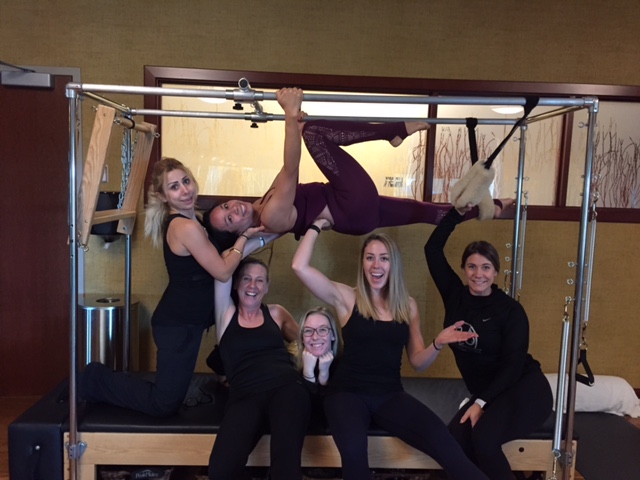Look at those lovely ladies!! Trainings are so much fun!! But something I often hear is “I don’t have any advanced clients. So I don’t need to take the Advanced training.” (And don’t even get me started on “I don’t need to take the Advanced Training. I can just learn the exercises from a video.” That’s another blog post).
So, why should you take an advanced training if you have clients that mainly do beginning work?
Your personal practice. Our work as instructors is our commitment to our practice. That does not mean that we judge ourselves or our self worth by how we look or compare ourselves as to who is doing Snake and who is not. It means that to teach Pilates we need to be challenging ourselves to progress to the most challenging exercises for us. Taking a training at a higher level will push you to learn new exercises (and probably practice for assessment). I haven’t taught an advanced training without seeing new exercises open for people that they thought were too difficult or even impossible to open up for their bodies. I find we are often overly focused on one exercise (like Snake) but are skipping all the exercises that lead up to Snake. Taking a training will help break that exercise you’ve been working toward down to it’s mini pieces and pre-exercises so that you can add more exercises to what you’re already doing with confidence.
You need to know the whole system. If you know the entire system, it’s easier to teach it. Many of the questions I get from beginner teachers are because they don’t know the entire system, and when you know the entire system, the beauty of it begins to unfold. For example, many people ask why we’re so picky about transitions, but if you’re not trying to get the advanced work done “in and hour and in the shower,” the transitions may not make sense. If you don’t know the entire order on Reformer, it doesn’t make sense why Spine Stretch moves in the order. When you see how all the exercises work in the complete system, you are able to see the overarching organization and am better able to choose which exercises to teach as your client progresses.
It will make you a better teacher. When you know the full expression of Joe’s work, you know where the journey takes your clients. Maybe Snake is something that will never be the best choice for your clients’ bodies, but if you know the purpose and goal of that exercise, you may know a pre-exercise or mini exercise that will meet that same goal (maybe on anther apparatus). If you know the fluidity and strength that the advanced work requires, you will teach your clients to that higher level, even if they never learn the more challenging exercises.
Working with your peers will inspire you. Sometimes it’s the little conversations that happen on breaks that will help solve a problem you’re having, a business issue, or a client issue. I always learn something from a training, especially from the more advanced trainings since the teachers have all been teaching for a longer time so they have so much to share. New ideas and solutions to problems and more peer help happens the more you advance in the system. These friendships and teaching moments will then continue to inspire you. It’s so important to help share in each other’s accomplishments, frustrations, and creative solutions. We carry this work together. Before I was an educational training center, I worked by myself and without advancing in the system, I could have easily started to teach “Jessilates.” Seeing the work of the Master instructor and my peers always helped to keep me working not only within the system, but also to it’s highest potential.
Feeling inspired yourself to level up? Check out our next Trainings here.





